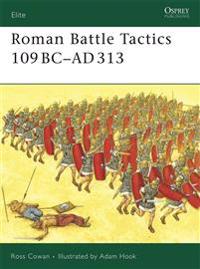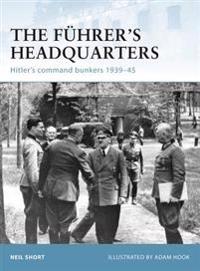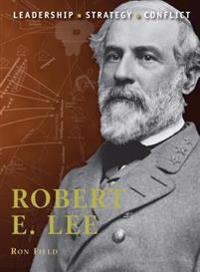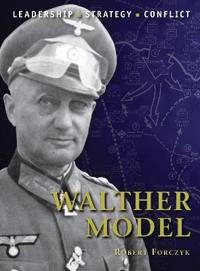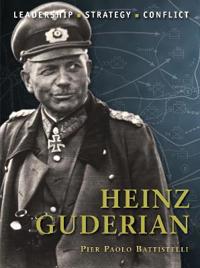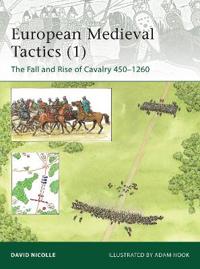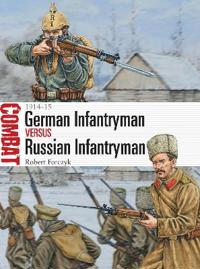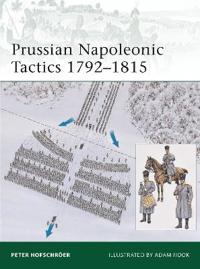Forts of the American Frontier, 1820-91 (Häftad)
avAdam Hook
ISBN: 9781841767758 - UTGIVEN: 2005-02A major period of westward expansion took place in the United States during the first half of the 19th century. The task of protecting the settlers from the Native American tribes that inhabited the Great Plains fell to the US Army, and to do this they constructed a network of permanent forts and te[...]
Pharsalus 48 Bc (Pocket)
avSi Sheppard, Adam Hook, Si Sheppard
ISBN: 9781846030024 - UTGIVEN: 200609In 48 BC, the stage was set for the final clash of the two titans of the Roman world and the odds were heavily in Pompey's favour, with 45,000 men against Caesar's 22,000. Having the dice loaded against him, however, seems to have stimulated Caesar's guile and genius for battle: guessing that Pompey[...]
Roman Battle Tactics 109BC-AD313 (Pocket)
avRoss Cowan, Adam Hook, Ross Cowan
ISBN: 9781846031847 - UTGIVEN: 200707The book clearly explains and illustrates the mechanics of how Roman commanders - at every level - drew up and committed their different types of troops for open-field battles. It includes the alternative formations used to handle different tactical problems and different types of terrain; the possi[...]
Frontier Militiaman in the War of 1812 (Pocket)
avEd Gilbert, Adam Hook, Ed Gilbert
ISBN: 9781846032752 - UTGIVEN: 200809"He who relies on militia leans upon a broken cane." (George Washington)
Osprey's survey of militiamen of the War of 1812. The great military effectiveness of semi-trained local militia is one of the enduring myths of American military history. In this book Ed Gilbert reveals the truth b[...]Pike and Shot Tactics 1590-1660 (Pocket)
avKeith Roberts, Adam Hook, Keith Roberts
ISBN: 9781846034695 - UTGIVEN: 201003Throughout the 17th century large parts of Europe were depopulated during the wide-ranging and savage wars of religion and dynasty, involving all of the major powers. This was therefore a key period in the development of 'modern' infantry tactics, such as the use of pole-arms and muskets together - [...]
The Fuhrer's Headquarters (Pocket)
avNeil Short, Adam Hook, Neil Short
ISBN: 9781846035821 - UTGIVEN: 201010The 100th title in "The Fortress Series", this book describes and examines the Fuhrerhauptquartiere - the 14 or so headquarters built for Hitler. Revealing their locations and how they were used to direct the Nazi war apparatus, this is a fascinating insight into a range of historical sites from Ber[...]
Robert E. Lee (Pocket)
avRon Field, Adam Hook, Ron Field
ISBN: 9781849081450 - UTGIVEN: 201009Beloved by his soldiers and respected by his enemies, Robert E. Lee is undoubtedly the most popular general in American history to fight on the losing side. This book takes an in-depth look at this southern gentleman as a strategist and a tactician, covering all of his most important victories and d[...]
Forts of the American Frontier 1776-1891 (Pocket)
avRon Field, Adam Hook, Ron Field
ISBN: 9781849083157 - UTGIVEN: 201110"Forts of the American Frontier 1776-1891: California, Oregon, Washington, and Alaska".
Walther Model (Pocket)
avRobert Forcyzk, Adam Hook, Robert Forcyzk
ISBN: 9781849083577 - UTGIVEN: 201106"Model".
Heinz Guderian (Pocket)
avPier Paolo Battistelli, Adam Hook, Pier Paolo Battistelli
ISBN: 9781849083669 - UTGIVEN: 201104Some consider Guderian to be the founding father of blitzkrieg warfare, and he certainly brought the whole concept to public attention and prominence, chiefly through the publication of his book "Achtung Panzer" in 1937. He commanded the XIX (Motorized) Army Corps in the 1939 Polish campaign, and Pa[...]
European Medieval Tactics (1) (Pocket)
avDavid Nicolle, Adam Hook, David Nicolle, , Elite
ISBN: 9781849085038 - UTGIVEN: 201106"Medieval cavalry tactics: Europe AD 450-1250".
Georgy Zhukov (Pocket)
avRobert Forczyk, Adam Hook, Robert Forczyk
ISBN: 9781849085564 - UTGIVEN: 201203Zhukov was the dominant figure in the Red Army during World War II even though his actual job title varied from day to day. Serving as a senior General Staff representative from the Stavka, Zhukov moved from one critical sector to the next, serving as advisor, coordinator and de facto front commande[...]
Defense of the Third Reich 1941-45 (Pocket)
avSteven J. Zaloga, Adam Hook, Steven J. Zaloga
ISBN: 9781849085939 - UTGIVEN: 201210Starting in 1940, Germany was subjected to a growing threat of Allied bomber attack. The RAF night bombing offensive built up in a slow but unrelenting crescendo through the Ruhr campaign in the summer of 1944 and culminating in the attacks on Berlin in the autumn and early winter of 1943-44. They w[...]
Apache Tactics 1830-86 (Pocket)
avRobert N. Watt, Adam Hook, Robert N. Watt
ISBN: 9781849086301 - UTGIVEN: 201201"Apache Tactics 1830-86".
Albert Kesselring (Pocket)
avPier Paolo Battistelli, Adam Hook, Pier Paolo Battistelli
ISBN: 9781849087353 - UTGIVEN: 201208Although he is mostly remembered for his part in the campaign in Italy from 1943 to 1945, Generalfeldmarschall Albert Kesselring was also chief of staff of the Luftwaffe in 1936-37, playing a crucial role in the shaping of the service for the coming war. As commander of Luftflotte 1 in Poland and Lu[...]
Armies of the Russo-Polish War 1919-21 (Pocket)
avNigel Thomas, Adam (ILT) Hook, Nigel Thomas
ISBN: 9781472801067 - UTGIVEN: 2014-11In 1917 Poland was recognised as a state by Russia, but the Bolshevik coup threatened this. The Polish leader Marshal Pilsudski hurried to build an army around Polish World War I veterans, and in 1918 war broke out for Poland's independence, involving the Poles, the Red and White Russian armies, at [...]
German Infantryman Vs Russian Infantryman 1914-15 (Pocket)
avRobert Forczyk, Adam (ILT) Hook, Robert Forczyk
ISBN: 9781472806543 - UTGIVEN: 2015-04The Eastern Front of World War I is sometimes overshadowed by the fighting in the West. But the clashes between Imperial Germany and Tsarist Russia in East Prussia, Poland and Lithuania were every bit as gruelling for the participants as the great battles in Western Europe. In spite of the crushing [...]
The Conquistador (Pocket)
avJohn Pohl, Adam (ILT) Hook, John Pohl
ISBN: 9781841761756 - UTGIVEN: 2001-11The Conquest of Mexico is a legendary chapter in the annals of military history. Accounts vary, but all portray the fall of the Aztec Empire as a super-human feat achieved against hordes of superstitious savages by only a few hundred Spaniards armed with superior weaponry and guided by the military [...]
World War I Trench Warfare (I) 1914-16 (Pocket)
avStephen Bull, Adam (ILT) Hook, Stephen Bull
ISBN: 9781841761978 - UTGIVEN: 2002-02The years from 1914 to 1918 saw a whole series of complex and very rapid changes in infantry tactics, which fundamentally altered the way wars had been fought for 150 years. This two-part study describes and illustrates the development of infantry equipment and weapons; of support weapons; of field [...]
Kolin 1757 (Pocket)
avSimon Millar, Adam (ILT) Hook, Simon Millar
ISBN: 9781841762975 - UTGIVEN: 2001-10In May 1757 Frederick the Great invaded Bohemia, smashed an Austrian army outside Prague and bottled it up inside the besieged city. The Empress Maria Theresa could not sit by and allow the second city of the Empire to be captured and Marshal Daun was despatched with 60,000 fresh troops to its relie[...]
German Infantryman 1933-40 (Pocket)
avDavid Westwood, Adam (ILT) Hook, David Westwood
ISBN: 9781841764627 - UTGIVEN: 2002-11The common German infantryman played a crucial role in the events that led to the outbreak of war, and the burden of duty lay on his shoulders during the opening moves of the conflict, in the invasion of Poland, the conquest of Norway and Denmark, the Low Countries and France. The Wehrmacht was unst[...]
Siege Warfare in the Roman World (Pocket)
avDuncan B. Campbell, Adam (ILT) Hook, Duncan B. Campbell
ISBN: 9781841767826 - UTGIVEN: 2005-05Sieges played a central role in the many conflicts of the Ancient World and many famous generals, including Alexander the Great, Hannibal, Julius Caesar and Trajan, successfully used siegecraft to gain their objectives. This title explores the range of techniques and tactics which developed during t[...]
Maori Fortifications (Pocket)
avIan Knight, Adam (ILT) Hook, Ian Knight
ISBN: 9781846033704 - UTGIVEN: 2009-04The Maori people of New Zealand were experienced field engineers and it was common practice to protect villages with surrounding entrenchments and wooden palisades, known as pas. However, it was not until 1845, with the first fighting between the Maori and the British, that it became clear just how [...]
The Atlantic Wall (2) (Pocket)
avSteven J. Zaloga, Adam (ILT) Hook, Steven J. Zaloga
ISBN: 9781846033933 - UTGIVEN: 2009-11Germany's Atlantic Wall was the most ambitious military fortification program of World War II. Following its conquest of Western Europe, Germany had to defend some 5,000km of Atlantic coastline from the Spanish border to the Arctic Circle. The United States' entry into the war and the inevitability [...]
Prussian Napoleonic Tactics 1792-1815 (Pocket)
avPeter Hofschroer, Adam (ILT) Hook, Martin (EDT) Windrow
ISBN: 9781846035098 - UTGIVEN: 2011-10"Prussian Napoleonic Tactics: 1792-1815".



